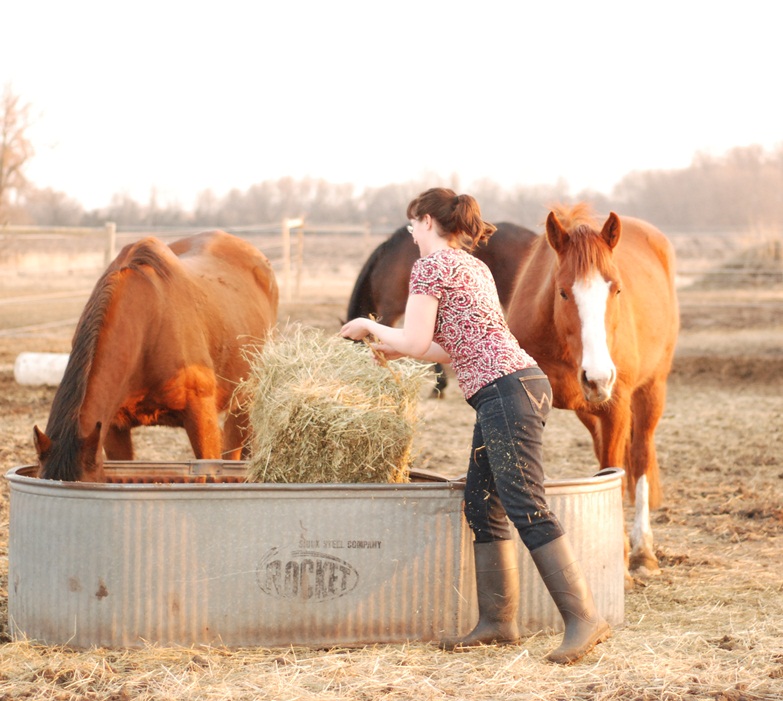Group Feeding Tips for Small Facilities

We are a far cry from a fancy operation with four horses on my property to manage. The horses in our herd live outside in one of two paddocks with fulltime access to a run-in shed which is divided in half. They get rotational turn out onto the pasture whenever possible.
With the variety of horses we have, our little operation is anything but simple. And oh how they vary! One is a 32-year-old hard keeping Arabian mare with a princess complex who has progressively lost dentition efficacy in the last few years. Next is her 14-year-old gelding son who is an air fern, aka quite possibly the world’s easiest keeper. Finally the two Warmblood geldings, half-brothers both in light work. One is a 16 hand, 10-year old fair doer while his brother (12 years) just under 16 hands, tends to be higher strung and a notch or two closer to being a hard keeper than his half-brother.
We feed good quality grass hay in small squares as we don’t have the storage space, equipment or desire to feed rounds. With these parameters, in combination with our variety of personalities, feeding time can be quite interesting. Over time, we’ve developed some strategies for making this living arrangement work. Here’s a few you might consider if you have a similar herd situation:
- Divide your herd by feeding needs and behaviors
- Separate the bully of the herd.
- If possible, put harder keepers with harder keepers, easy keepers with other easy keepers.
- Keep an eye over time as the herd dynamics shift, the bullies can easily become bullied and go from ideal weight to underweight if you’re not checking regularly.
- Check body condition score on a regular basis and be prepared to move horses around if dietary needs change.
- Provide at least as many feeders as there are horses. More if you can. Divide the ration of hay evenly among them. This allows those who are bullied by others the chance to get what they need.
- While on pasture, use a grazing muzzle on the easy keepers so that the harder keepers can have sufficient time with the forage.
- When it comes to feeding concentrate, use paddock, pasture, round pens, arena etc. to separate the herd. This way, those who need a different feed type (example: ration balancer versus a senior feed) can get what they need and have time to eat it.
- If you don’t have facilities to separate during the time to feed concentrate, consider guarding the slower eater so they can get sufficient time to eat their full ration. This may add time to the chore schedule, but it will help to ensure all horses are meeting their unique nutritional needs.
Keeping multiple horses with a variety of nutritional needs in a smaller space can be a challenge. But with a little creativity and the right tools, you can be assured everyone gets what they need.
